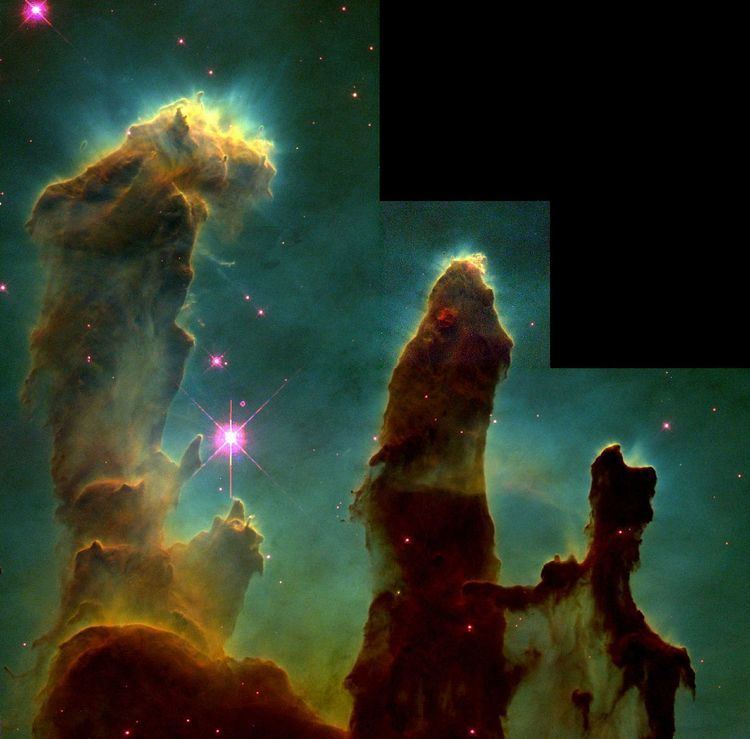 | ||
Photoevaporation denotes the process where energetic radiation ionises gas and causes it to disperse away from the ionising source. This typically refers to an astrophysical context where ultraviolet radiation from hot stars acts on clouds of material such as molecular clouds, protoplanetary disks, or planetary atmospheres.
Contents
Molecular clouds
One of the most obvious manifestations of astrophysical photoevaporation is seen in the eroding structures of molecular clouds as luminous stars are born within.
Planets and atmospheres
A planet can be stripped of its atmosphere (or parts of the atmosphere) due to high energy photons and other electromagnetic radiation. If a photon interacts with an atmospheric molecule, the molecule is accelerated and its temperature increased. If sufficient energy is provided, the molecule or atom may reach the escape velocity of the planet and "evaporate" into space. The lower the mass number of the gas, the higher the velocity obtained by interaction with a photon. Thus hydrogen is the gas which is most prone to photoevaporation.
Protoplanetary disks
Protoplanetary disks can be dispersed by stellar wind and heating due to incident electromagnetic radiation. The radiation interacts with matter and thus accelerates it outwards. This effect is only noticeable when there is sufficient radiation strength, such as coming from nearby O and B type stars or when the central protostar commences nuclear fusion.
The disk is composed of gas and dust. The gas, consisting mostly of light elements such as hydrogen and helium, is mainly affected by the effect, causing the ratio between dust and gas to increase.
Radiation from the central star excites particles in the accretion disk. The irradiation of the disk gives rise to a stability length scale known as the gravitational radius (
The formula for the gravitational radius of the disk is
where
Because of this effect, the presence of massive stars in a star-forming region is thought to have a great effect on planet formation from the disk around a young stellar object, though it is not yet clear if this effect decelerates or accelerates it.
